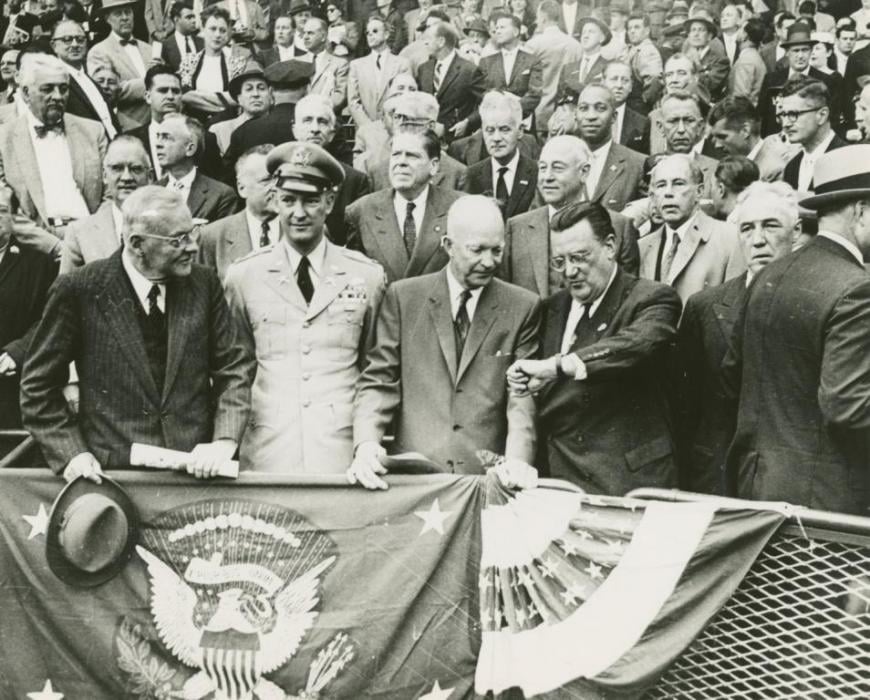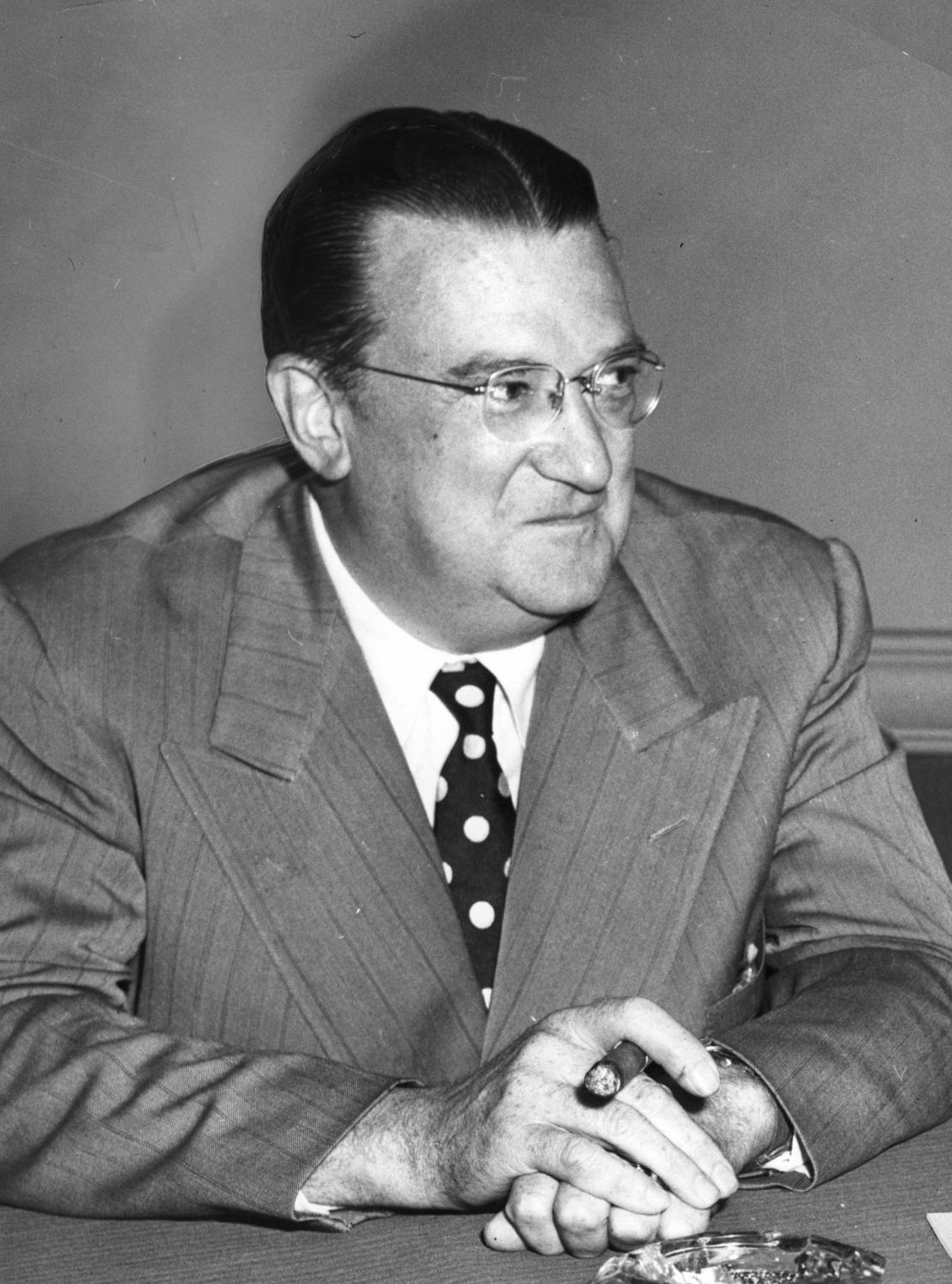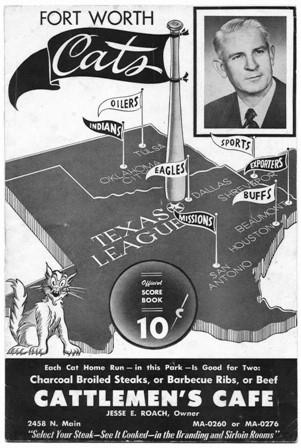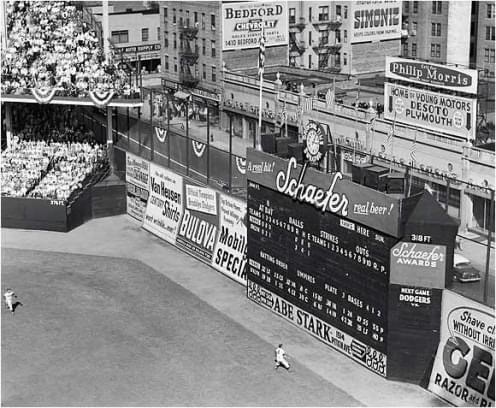President Eisenhower is about to throw out the first pitch at Ebbets Field for game 1 of the 1956 World Series
October 3, 1956 President Eisenhower is about to throw out the first pitch at Ebbets Field for game 1 of the 1956 World Series. Walter O’Malley checks his watch for the starting time. Just beside O’Malley is commissioner Ford Frick. In the left hand side of this photo is Secretary of State, John Foster Dulles….






